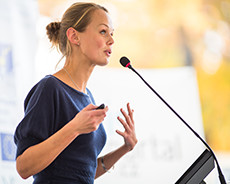A History of WPSU
The first details concerning the WPSU are recorded in the society minutes of 18th September 1992 following a letter from Professor Jo Sibert asking the society to consider setting up what was then called the Welsh Paediatric Surveillance System. This was modelled on the British Paediatric Surveillance System (BPSU) which had been set up in 1986.
At the AGM of the 24th October 1992 Professors DP Davies and Jo Sibert reported that they had considered the idea and felt that Wales would be an ideal area to complement the BPSU in studying conditions that were more common than would be appropriate for inclusion in a UK study but not frequent enough to permit study by a single unit.
In the meeting held in May 1993 speculations and avenues for funding were discussed.
The committee was informed at the meeting of the 18th February 1994 that significant progress had been made with the help of Professor Palmer through the Welsh Combined Centre for Public Health (WCCPH).
The Welsh Paediatric Surveillance System (WPSS) was eventually set up in 1994 as a joint venture between the University of Wales Departments of Child Health (Professor J Sibert) and Public Health Medicine (Professor S Palmer). Research Fellow, Eileen Darby, was appointed in the Department of Public Health Medicine in the University Wales College of Medicine to administer the system from the WCCPH.
In February 1996 it was reported that Elaine had left to do voluntary work in Vietnam and at this stage the secretary of the Welsh Paediatric Society (WPS) was asked to help co-ordinate the project.
In 1996 Research Officer Heather O’Connell was appointed to administer the system, under the then secretary of the WPS Dr J Morgan as co-ordinator, from the University of Wales Department of Child Health in the Academic Centre at Llandough Hospital. The management of the system was reorganised during 1996 in conjunction with the WPS which included setting up a new Access database. In September 1996 and October 1996 the minutes record support for the system but funding difficulties.
At the February meeting of 2000 it was reported that Health of Wales Information Systems (HOWIS) would offer some funding of £5000. The Society at the meeting of September 2000 gave a grant of £2000. Funding has since been obtained from the Welsh Office for Research and Development, the National Assembly for Wales and latterly from Public Health Wales.
In 2006 the Welsh Paediatric Surveillance Unit (WPSU) moved to the University Hospital of Wales, hosted by Cardiff and Vale University Health Board.
On 1 April 2022 the Welsh Paediatric Surveillance Unit (WPSU) transferred to Public Health Wales.
The system in Wales looks at conditions in children which are considered to be too common for a UK study, but too uncommon for a local hospital to undertake research. The Welsh Paediatric Surveillance Unit (WPSU) is based on and continues to use similar methodology to the very successful British Paediatric Surveillance Unit with whom we have a very close relationship.
Wales has a child population of less than 600,000. This is sufficient to carry out studies and the unit can also offer a service to local paediatricians about the conditions themselves, thus improving the body of knowledge within Wales. Information obtained from a number of the studies has enabled the society to inform Welsh Government and Public Health Wales on the service in general and specifically regarding services for children needing critical care, renal services and palliative care.
The unit has been very successful. A considerable number of studies have been completed including studies on acute and chronic renal failure, congenital adrenal hyperplasia, coeliac disease, the critical ill child, childhood tuberculosis, children in house fires, facial palsy, inflammatory bowel disease, Marfan’s Syndrome, newly diagnosed malignant disease, neonatal abstinence syndrome, newly diagnosed diabetes mellitus, palliative care, physical child abuse, splenectomy and hyposplenism, severe child abuse, subdural haemorrhage, septo-optic dysplasia, complicated pneumonia, juvenile idiopathic arthritis, non type 1 diabetes mellitus, hypernatraemia in childhood, child death review pilot, craniosynostosis, gall stones in children, juvenile myoclonic epilepsy, long term ventilation, vitamin D deficiency, nosebleeds in infants, hypoxic-ischaemic encephalopathy, benign epilepsy, neonatal invasive fungal infection, pancreatitis (acute), congenital brachial plexus palsy, sudden death in epilepsy and non-accidental head injury.
When the unit was set up, there was some anxiety that the returns to the British Paediatric Surveillance Unit would diminish, but Wales has an excellent record and is consistently at the top of the league of returns to the BPSU. The WPSU return rate is the envy of all the other surveillance units in the UK.
The BPSU system has been copied all over the world resulting in 1998 with the formation of the International Paediatric Surveillance Unit (INoPSU) comprising 14 units at it's biggest, in addition to that of Britain, namely, Australia, Canada, Germany, Greece and Cyprus, Ireland, Latvia, Malaysia, New Zealand, Netherlands, Papua New Guinea, Portugal, Switzerland, Trinidad and Tobago and Wales.

